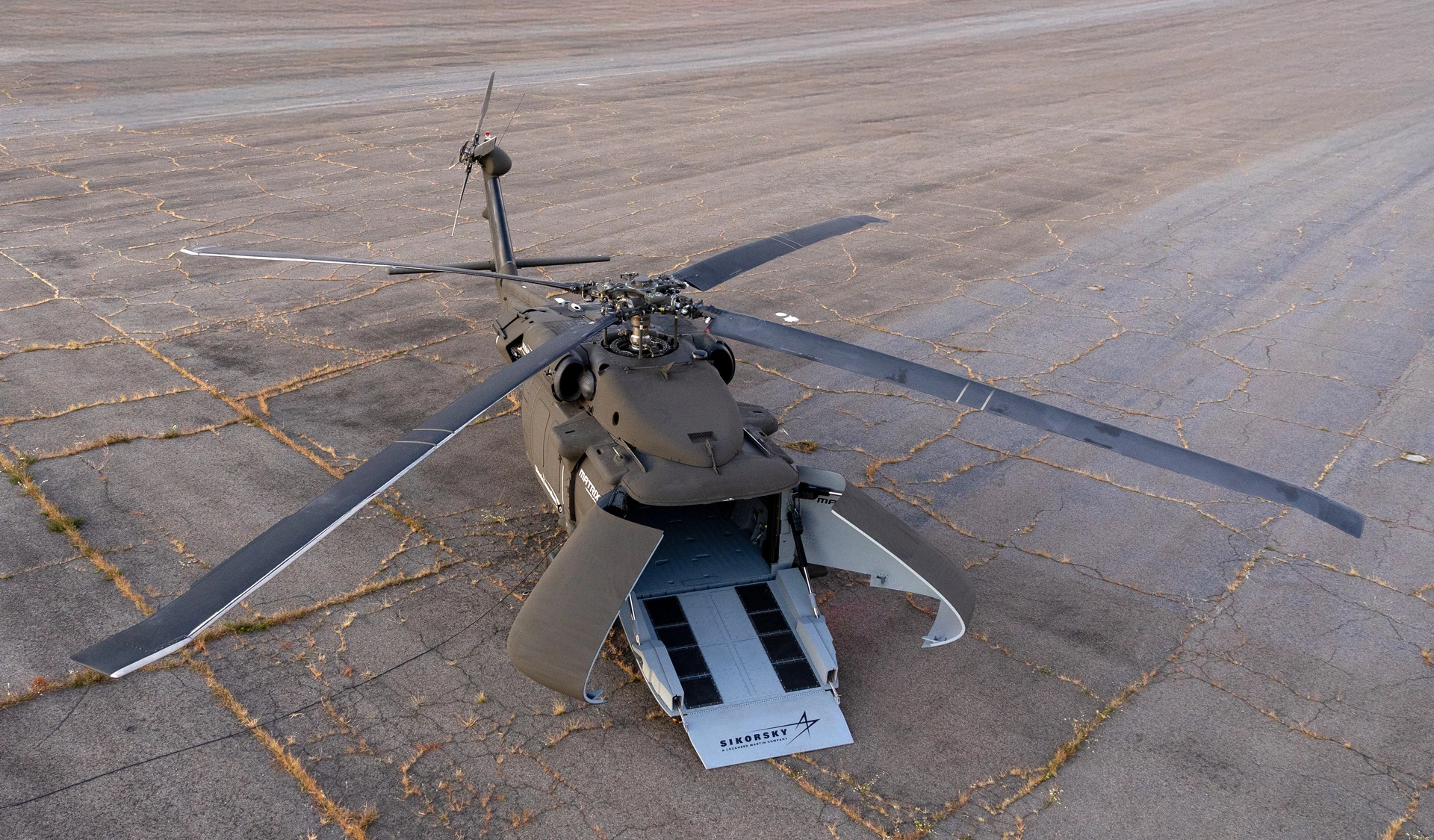Lockheed Martin subsidiary Sikorsky has taken the next logical step in making a Black Hawk helicopter autonomous by not only installing the gear needed for self-flying, but by yanking out the entire cockpit and replacing it with cargo doors.
Making a Black Hawk helicopter autonomous isn't new. DARPA and Sikorsky have been doing conversions on production versions of the aircraft for years – they've even been testing them as firefighting platforms. That's fine if the goal is to make Black Hawks pilot optional, but how about getting rid of the pilot and the cockpit altogether?
Revealed at the Association of the United States Army (AUSA) exposition this week, the S-70UAS U-Hawk is Sikorsky's answer to that question. Based on the UH-60L Black Hawk, it shares the same lines of its predecessor except for one glaring difference. There's no cockpit, no windows, no seats – in fact, no provision for any passengers or crew.
The idea is to produce a new logistical and air assault Black Hawk to service soldiers in the field. According to Lockheed, it took only 10 months to go from concept to roll out, with the first flight expected in 2026.
At the heart of the U-Hawk is Sikorsky's Matrix autonomy technology combined with a third-generation fly-by-wire system. Installed in both crewed and uncrewed aircraft, this acts as a digital co-pilot that can automatically generate flight plan, navigate the craft, and avoid obstacles and threats by means of on-board cameras. In other words, it can handle a full mission from take off to shut down without a human pilot.
Because of this, the U-Hawk isn't designed for a pilot. Instead, it has an operator who doesn't necessarily have any pilot training. Using a ruggedized tablet, the operator inputs the high-level mission goals and the Matrix system takes it from there.

The most dramatic physical change is that the cockpit has been replaced by clamshell doors and a ramp that provides the helicopter with 25% more cargo space. This not only increases payload volume so the U-Hawk can carry oversized cargo like HIMARS pods or two Naval Strike Missiles, it also turns the aircraft into a roll-on roll-off platform for uncrewed ground vehicles. In addition, it can carry drone swarms and internal fuel tanks for extended range.
Sikorsky says that the reconfiguration includes improved T700-GE-701C engines, an upgraded gearbox, and an increase in external lift capacity from 8,000 lb (3,630 kg) to 9,000 lb (4,082 kg).
"Sikorsky is innovating a 21st century solution by converting UH‑60L Black Hawks into a fully autonomous utility platform," said Rich Benton, Sikorsky vice president and general manager. "We developed this prototype from concept to reality in under a year, and the modifications made to transform this crewed Black Hawk into a multi-mission payload UAS can be replicated at scale quickly and affordably. The U-Hawk continues the Black Hawk legacy of being the world’s premier utility aircraft and opens the door to new capabilities as a UAS."
Source: Lockheed Martin








